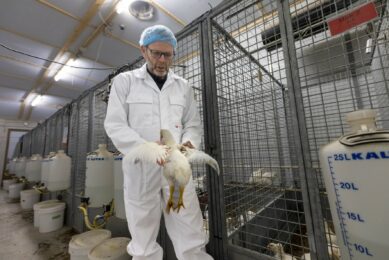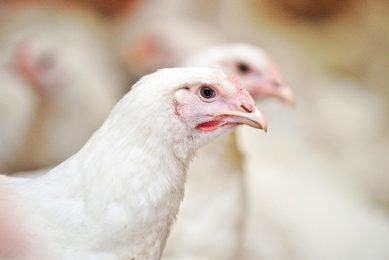Supporting birds and farmers – half empty or half full?

Recently, I realised that applying half house broiler brooding is not allowed by law. Frankly, this is a good (or bad) example of regulations that have been overtaken real day-to-day poultry management in practice.
In the past, with low energy prices, this was not a big issue. However, at the moment, broiler producers are facing highly volatile energy prices due to the war in Ukraine. For those of us in animal husbandry, this is a real headache. Rules must be supportive of both the animals (behaviour and welfare) and the farmer (income and work satisfaction). In reality the legislation often blocks innovation and finding practical solutions.
Wageningen Livestock Research therefore started a public-private partnership (PPP) project with slow-growing broilers. A PPP is a project funded by a wide range of commercial partners active in the slow-growing chain, together with the legislator, this being the Ministry of Agriculture.
This way of supporting innovative projects is the typical Dutch approach in which commercial companies, farmers, government, education and researchers work together. This is also known as the ‘BREF square’ which stands for collaboration between Business, Research, Education and Farmers. In our experience, this approach really fosters innovation, as well as knowledge development and dissemination.
The half house brooding method
One of the issues in the current project is to investigate the pros and cons of using the half house brooding method. I know for a fact that this method is common practice in broiler houses in the US. In this system, a curtain or wall is lowered halfway along the house and all the chicks are placed on one side of the barrier. The chicks are usually kept in half the house for between 1 and 2 weeks, after which they are given access to the entire house. This roughly halved the energy costs. But there are more advantages.
Research has shown that there are indications that first week mortality decreases at a higher stocking density. In a study carried out by Wageningen Livestock Research, stocking rates of 20 chicks (regular) per m2 were compared with 30 and 40 chicks per m2. This study showed that up until 14 days of age, a stocking density of up to 40 chicks/m2 did not lead to negative effects on animal behaviour and other animal welfare indicators. Young birds find safety and warmth together, and thrive.
We intend to investigate this management tool under Dutch (European) conditions and collect more information about the best way to implement it in practice. At the end of the day, our research is driven by the ‘BAF’ approach, which means Better for Animal and Farmer. Implementing new management methods is only useful if both bird and farmer benefit from them. Given my positive basic attitude, I would say the conclusion is that the house is comfortably half full.












